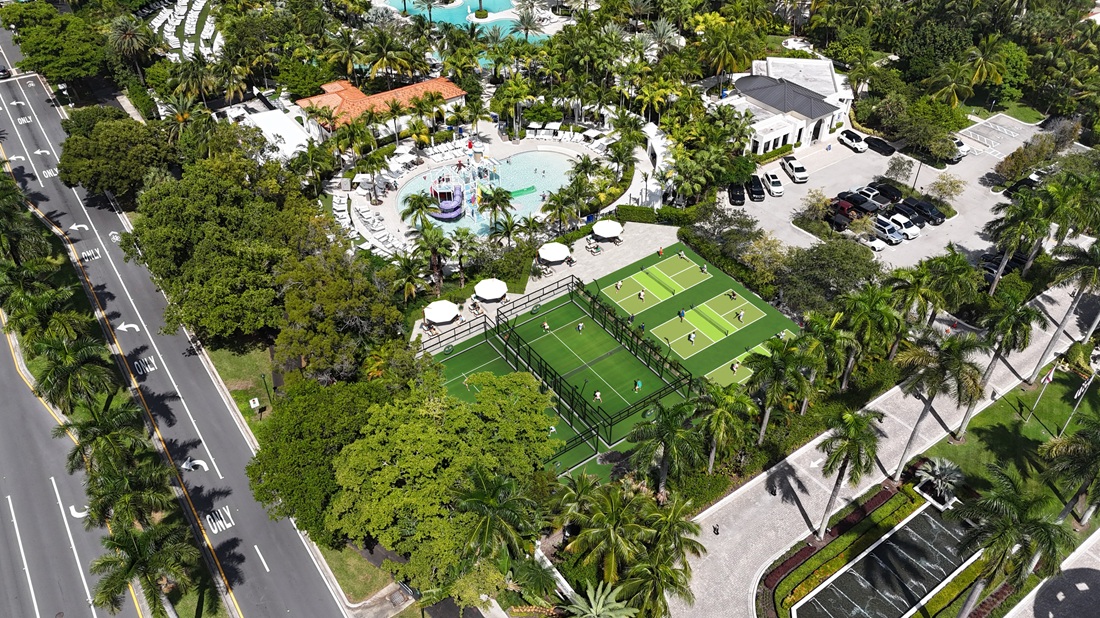The Haute Evolution
Art Basel Miami Beach
True, Art Basel Miami Beach was up and running two years before Haute Living officially launched, but it’s an important factor in the maturation of the city that we simply can’t ignore. Samuel Keller, a native of Basel, Switzerland, first brought Art Basel to the shores of South Florida in 2002. Haute Living featured him on the cover of our annual Art Basel edition in 2007, which happened to be his last year as the director of the fair. In our interview, he stated that he was ecstatic about the way Art Basel Miami Beach had impacted the city’s growth. He said, “If you think about it, this was a high-risk venture. The first year, it didn’t happen because of 9/11, and only a few years later, it has become the most important art event in America and the second most important art fair in the world.”
Art Basel puts Miami on the global map as a cultural destination, rather than simply an oasis for spring breakers. Over the years, Art Basel grew to embody so much more than just an art show in the Miami Beach convention center. During the first week of December, the entire city comes alive with satellite fairs, pop-up exhibitions, temporary galleries, and more, resulting in what is now referred to as “Miami Art Week.”
Design District & Wynwood Arts District
Much of that fanfare takes place in two Miami neighborhoods that were not so haute when Haute Living launched in 2004. Craig Robins, the developer behind Dacra, began acquiring property in the decaying Design District in the 1990s with a vision of creating a haven for high-end furniture and design companies that called to discerning buyers. In a piece on Art Basel in 2009, the Wall Street Journal heralded the Design District as “one of the hottest design centers in the country.” Needless to say, Robin’s vision has been realized. The Design District is now home to high-end brands like Fendi Casa, Paltrona Frau, and Cappellini, which cater to astute buyers. The city’s culinary superstars, such as Michael Schwartz, Jonathan Eissman, and Michelle Bernstein, opened up eateries to serve the design-hungry masses.
Nearby, other visionaries are leading the transformation of a neighborhood from blighted to bangin’—this time, father and son duo Tony and Joey Goldman of Goldman Properties. With a track record that includes the transformation of New York’s SoHo and Miami’s South Beach, Goldman Properties began investing in properties in the Wynwood neighborhood of Miami in 2003, with a goal of transforming the warehouse-packed enclave into the “SoHo of Miami”—a live/work/play environment that calls to the creative types. To get the ball rolling, the father-and-son team partnered with Museum of Contemporary Art to open Goldman Warehouse, a 12,000-square-foot gallery that hosted MOCA’s annex for a number of years before opening an independent exhibition program for Art Basel 2009. Goldman is also behind the inspired Wynwood Walls, an outdoor mural project on the warehouse walls throughout the district. Twelve murals debuted during Art Basel 2009, with plans to add a minimum of 15 murals over the course of the subsequent two years.
The project adds to the colorful allure of the arts district, which incorporates 50-some art galleries, in addition to a slew of museums, artist studios, design retails, and more. In the past few years, a number of restaurants and lounges popped up to cater the eclectic crowd, with the likes of Cafeina, Joey’s, and Morgan’s appealing to those in search of the arts–the culinary kind.












